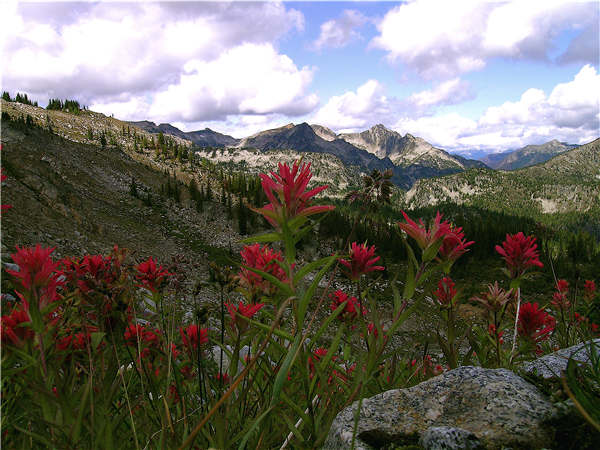National parks offer natural allure
Updated: 2016-09-28 08:56
By Erik Nilsson(China Daily)
|
||||||||
 |
|
Kokanee Glacier Provincial Park, a well-known alpine park in the Kootenay area of British Columbia. Provided To China Daily |
Polar bears. Niagara Falls. Aurora borealis.
Amazing animals, wondrous waters and surreal skies.
Indeed, Canada's natural wonders are luring a growing number of Chinese.
China Daily explores Canada's most-visited national parks.
Mount Revelstoke
Ents would feel small among the towering trees of Earth's only inland cedar rainforest. Revelstoke's trees, in turn, would perhaps feel only slightly younger than their Middle Earth ancestors.
Comparatively, humans feel like little babies.
There's good reason the park hosts an Amazing Trees Tour.
That said, over half of the terrain punches above the tree line, and a tenth is permanently frozen.
The Columbia Mountains' jut generates three ecosystems: "rainforest, snow forest and no forest."
These wonders aside, the fireworks display of bursting blossoms during summer served as the initial motivation for its national park designation.
Kootenay
Topography chops forests and grasslands into looming mountains and lunging valleys, vacillating between snowcaps and hot springs. Waterfalls spurt from peaks to fill rivers that massage the mountains' feet.
Geology and zoology conspired to forge Kootenay's Burgess Shale, one of the world's most significant fossil deposits.
Today, the area hosts such wildlife as the "two-headed" rubber boa. It's not a real hydra - rather, its knobbed tail resembles a snout used as a weapon to club small animals as well as to bluff. Some have reportedly faked strikes with their tails.
Wapusk
The park's name is Cree for "white bear". About a thousand polar bears descend upon one of the world's chief maternity-den areas around November.
It's one of the best places to see cubs.
The world's largest land predators gnaw on ring seals while they wait for winter icecaps to form.
Wapusk hosts 40 mammal species, including lemmings, arctic foxes and a herd of 3,000 caribou.
Over 1,000 plant varieties survive despite the icy climate. The subarctic forest's ancient trees are about as high as a human, and roaring northerlies blast their branches to stretch southward. Helicopter rides offer elevated views of the terrain.
Pacific Rim
Surfing and Nuu-chah-nulth culture lure explorers to Pacific Rim National Park.
Its Long Beach Challenge Route isn't exactly a walk on the beach in the typical sense. It's a 9.5-kilometer trek - or jog - along oceanfront landscapes. Cards record and post participants' times on interactive displays.
Even more challenging is the 75-km West Coast Trail that traces a path blazed by shipwreck survivors through ancient forests and vast beaches. It takes experienced hikers about a week.

 Clinton, Trump go head to head in high stakes presidential debate
Clinton, Trump go head to head in high stakes presidential debate
 Miniature replica of Daming Palace shows craftsmanship
Miniature replica of Daming Palace shows craftsmanship
 Elderly man creates map of China with colorful rice
Elderly man creates map of China with colorful rice
 Students 'die' to get closer to each other in Hangzhou
Students 'die' to get closer to each other in Hangzhou
 Classic autos debut at Beijing Design Week
Classic autos debut at Beijing Design Week
 World in photos: Sept 19 - 25
World in photos: Sept 19 - 25
 Milan Fashion Week: Dolce & Gabbana Spring/Summer 2017
Milan Fashion Week: Dolce & Gabbana Spring/Summer 2017
 Hangzhou opens G20 summit arena to general public
Hangzhou opens G20 summit arena to general public
Most Viewed
Editor's Picks

|

|

|

|

|

|
Today's Top News
Trump outlines anti-terror plan, proposing extreme vetting for immigrants
Phelps puts spotlight on cupping
US launches airstrikes against IS targets in Libya's Sirte
Ministry slams US-Korean THAAD deployment
Two police officers shot at protest in Dallas
Abe's blame game reveals his policies failing to get results
Ending wildlife trafficking must be policy priority in Asia
Effects of supply-side reform take time to be seen
US Weekly

|

|









